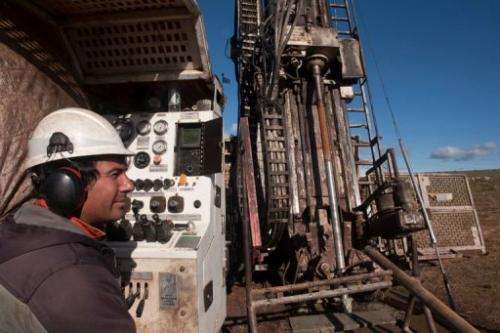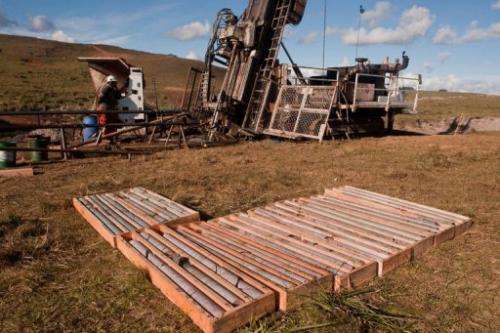Giant open-pit mine raises questions in Uruguay

A plan to build a giant open pit mine has created a sharp rift between those who think Uruguay's rich agricultural land should be protected, and those wanting to exploit its wealth.
The Aratiri project, owned by Zamin Ferrous, a London-based minerals company, will cost an estimated $2.5 billion (1.7 million Euros), the largest mining project ever in South America, and equivalent to more than six percent of Uruguay's gross domestic product.
For the past two years, the company has been permitted to prospect for iron on 120,000 hectares (460 square miles) of land around the village of Cerro Chato in the center-east of the country.

Bolstered by continuing demand from Asia and the Middle East, iron prices have been on a steady rise.
The Uruguayan government must still approve the actual mine, which will cover some 12,000 hectares (46 square miles), and has insisted on a new environmental impact statement.
But farmers and ecologists have opposed the project, which they say will force 2,500 people to leave their land and cause irreversible environmental damage.
In Uruguay the sub-soil belongs to the state, and it has asked farmers to let the company use their land to hunt for iron ore.
For relatively meager compensation, Claudia Perugorria allowed the mining company's digging machines onto her 47 hectares (116 acres), where she raises about 30 cows and sheep. Today, her pastures are scarred with traces of tires, craters and holes where animals may stumble and injure themselves.
"The vegetation will take some time to recover," said Perugorria, who has filed a lawsuit against the company.
So far Uruguay, unlike the rest of South America, has been largely untouched by the ravenous appetites of the mining companies, favoring instead its agricultural sector. Its vast, lush meadows are treated like gold.
Julio Gomez, the spokesman for the cattle ranchers, believes the project is "excessive" for Uruguay, a country of just 176,215 square kilometers (68,036 square miles) sandwiched between Brazil and Argentina, and where the 11 million cattle outnumber the population by three times.
Aratiri, which expects to extract some 18 million tons of iron ore per year, would "seriously change the environmental equilibrium which has existed for more than 200 years," said one cattle rancher.
"The extraction of a finite resource, iron, which will last for just 30 years, is going to replace a far more productive, and longer-lasting activity.
"What's more, 95 percent of the benefits of the mine will disappear down the tube to support the Chinese and Indian industries," the rancher added.
"We're not creating a steel industry here, and later we'll be buying iron bolts from China," he added regretfully.
Under its existing mining laws, the country would keep five percent of all minerals extracted from the open pit mine, although the regulations are currently under revision and could change.
The project includes the construction of a mining duct, a 200 kilometer (120 mile) tube that will carry the mineral to a deep-water port for export.
Many of the 4,500 inhabitants of Cerro Chato, however, welcome the industrial revitalization and the jobs that will be created, especially former herders who will earn three times more at the mine.
"Before, we'd return to the village just once every 20 days; today we are there every day, and with a lot more respectable salary," said Francisco da Silva, a mine employee and member of the mining union UNTMRA.
"This is the most economically repressed area in the country, and these projects are what the country needs, it's very positive," he added.
The project will create 1,500 jobs directly and bring in $500 million (348 million euros) annually, or around 1.5 percent of the country's GDP, said an Aratiri official, Santiago Sotuyo.
"These deposits, which contain about 30 percent iron, are viable today because the price is so high," said the country's director of mines, Pier Rossi.
For Rossi, Uruguay is at a crossroads. "We must decide whether we want to enter into this type of development," he said, and if so, "how we're going to do it."
(c) 2011 AFP
















